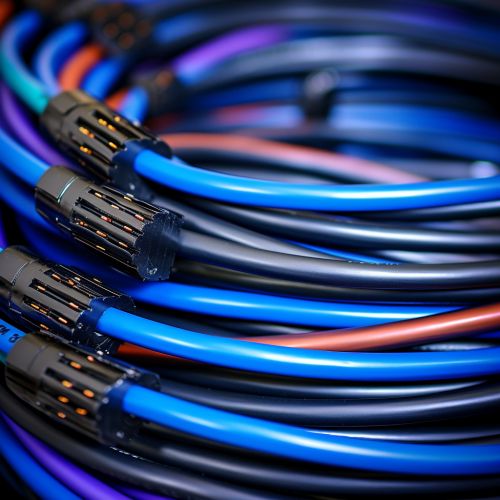Data transmission
Introduction
Data transmission, also known as digital communication or digital telecommunication, involves the transfer of data (a digital bitstream or a digitized analog signal) over a point-to-point or point-to-multipoint communication channel. Examples of such channels are copper wires, optical fibers, wireless communication channels, storage media and computer buses. The data are represented as an electromagnetic signal, such as an electrical voltage, radiowave, microwave, or infrared signalDigital Signal.
Types of Data Transmission
Data transmission can occur in two main ways: serial or parallel. Serial data transmission sends data bits one after another over a single channel. Parallel data transmission sends multiple data bits at the same time over multiple channels.
Serial Transmission
In serial transmission, bits are sent sequentially on the same channel (wire) which reduces costs for wire but also slows the speed of transmission. Also, for long distances, synchronizing two clocks in these systems became a difficult problem.
Parallel Transmission
In parallel transmission, multiple bits (in the form of a byte or word) are sent simultaneously on different channels (wires, frequency channels) within the same cable, or radio path, and synchronized to a clock. Parallel devices have a wider data bus than serial devices and can therefore transfer data in words of one or more bytes at a time. As a result, there is a speedup in parallel transmission bit rate over serial transmission bit rate. However, this speedup is a trade-off versus cost since multiple wires cost more than a single wire, and as a parallel cable gets longer, the synchronization timing between different channels becomes more sensitive to distance. The timing skew between different channels can be adjusted by pipeline delay circuits.
Transmission Modes
There are three types of transmission modes. They are Simplex, Half duplex, and Full duplex.
Simplex
In Simplex mode, the communication is unidirectional, as on a one-way street. Only one of the two devices on a link can transmit; the other can only receive.
Half Duplex
In Half duplex mode, each station can both transmit and receive, but not at the same time. When one device is sending, the other can only receive, and vice versa.
Full Duplex
In Full duplex mode, both stations can transmit and receive simultaneously. The single communication path is conceptually divided into two parts, one for send and one for receive.
Data Transmission Codes
Data transmission codes are standardized sets of rules that allow different devices to communicate with each other across a network. These standardized sets are developed by various networking organizations. This standardization allows different devices to understand the data they are receiving, and determine how to process it.
ASCII
The ASCII (American Standard Code for Information Interchange) is the most commonly used character coding standard to represent text in computers and other devices that use text. ASCII codes represent text in computers, telecommunications equipment, and other devices.
Unicode
Unicode is a computing industry standard designed to consistently and uniquely encode characters used in written languages, and may be implemented to support multiple languages and scripts. Unicode can be implemented by different character encodings. The Unicode standard includes a set of code charts for visual reference, an encoding method and set of standard character encodings, a set of reference data files, and a number of related items, such as character properties, rules for normalization, decomposition, collation, rendering, and bidirectional display order (for the correct display of text containing both right-to-left scripts, such as Arabic and Hebrew, and left-to-right scripts).
Error Detection and Correction
In data transmission, errors can occur frequently. An error can happen due to various reasons, including electrical interference, power surges, or even physical damage to the network system. To ensure data integrity, methods have been developed to detect and, in some cases, correct errors that can occur during data transmission.
Parity Check
A parity check is the simplest form of error detecting code. It works by adding an additional bit to the data, known as a parity bit, to ensure that the total number of 1-bits in the string is even or odd.
Checksum
A Checksum is a simple way to detect errors in data during transmission or storage. A checksum is used to ensure the integrity of data after it is transmitted. The checksum is calculated before and after transmission, and if the two values do not match, an error is detected.
Cyclic Redundancy Check
A Cyclic Redundancy Check (CRC) is a method used to detect errors in data transmission. It is a type of checksum that is calculated from the data being sent and is sent along with the data. If the checksum that is received with the data does not match the calculated checksum, an error is detected.
See Also


